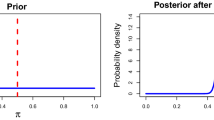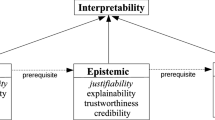Abstract
Classical expert systems are rule based, depending on predicates expressed over attributes and their values. In the process of building expert systems, the attributes and constants used to interpret their values need to be specified. Standard techniques for doing this are drawn from psychology, for instance, interviewing and protocol analysis. This paper describes a statistical approach to deriving interpreting constants for given attributes. It is also possible to suggest the need for attributes beyond those given.
The approach for selecting an interpreting constant is demonstrated by an example. The data to be fitted are first generated by selecting a representative collection of instances of the narrow decision addressed by a rule, then making a judgement for each instance, and defining an initial set of potentially explanatory attributes. A decision rule graph plots the judgements made against pairs of attributes. It reveals rules and key instances directly. It also shows when no rule is possible, thus suggesting the need for additional attributes. A study of a collection of seven rule based models shows that the attributes defined during the fitting process improved the fit of the final models to the judgements by twenty percent over models built with only the initial attributes.
Similar content being viewed by others
Explore related subjects
Discover the latest articles, news and stories from top researchers in related subjects.References
E. Shortliffe, Details of the consulation system, in:Rule-Based Expert Systems: The MYCIN Experiments, eds. B. Buchanan and E. Shortliffe (Addison-Wesley, Reading, MA, 1984).
W.J. Clancey,Proc. National Conf. on Artificial Intelligence (Kaufmann, Los Altos, California, 1984) pp. 49–55.
B. Buchanan, D. Barstow, R. Bechtel, J. Bennet, W. Clancey, C. Kulikowsky, T. Mitchell and D. Waterman, Constructing an expert system, in:Building Expert Systems, eds. F. Hayes-Roth, D. Waterman and D. Lenat (Addison-Wesley, Reading, MA, 1983).
J. Bruecker and B. Weilinga, Techniques for knowledge acquisition and analysis, Report 1.5, Esprit project 12, Memorandum 28 of the Research Project “The Acquisition of Expertise” (University of Amsterdam, 1984).
I. Neale, First generation expert systems: a review of knowledge acquisition methodologies, Knowledge Eng. Rev. 3 (1988) 105–146.
W.S. Cleveland,The Elements of Graphing Data (Wadsworth, Monterey, CA, 1985). The section “Time Series: Connected, Symbol, Connected Symbol, and Vertical Line Graphs” begins on p. 178.
R. Rivest, Learning decision lists, Machine Learning 2 (1987) 229–246.
J.R. Quinlan, Generating production rules from decision trees,IJCAI-87, Milan, Italy (1987) pp. 304–307.
P. Clark and T. Niblett, The CN induction algorithm, Machine Learning 3 (1987) 261–283.
W.S. Cleveland, Robust locally weighted regression and smoothing scatter plots, J. Am. Statistical Assoc. 74 (1979) 829–836.
D. Pregibon, private communication (1988). Tree Modeling in S, manuscript in preparation.
R. Becker, J. Chambers and A. Wilks,The New S Language (Wadsworth, Monterey, CA., 1988).
J.R. Quinlan, Induction of decision trees, Machine Learning 1 (1986) 81–106.
L. Breiman, J. Friedman, R. Olshen and C. Stone,Classification and Regression Trees (Wadsworth, Monterey, CA., 1984).
Author information
Authors and Affiliations
Rights and permissions
About this article
Cite this article
Gale, W.A. A statistical approach to knowledge acquisition for expert systems. Ann Math Artif Intell 2, 149–163 (1990). https://doi.org/10.1007/BF01531003
Issue Date:
DOI: https://doi.org/10.1007/BF01531003




